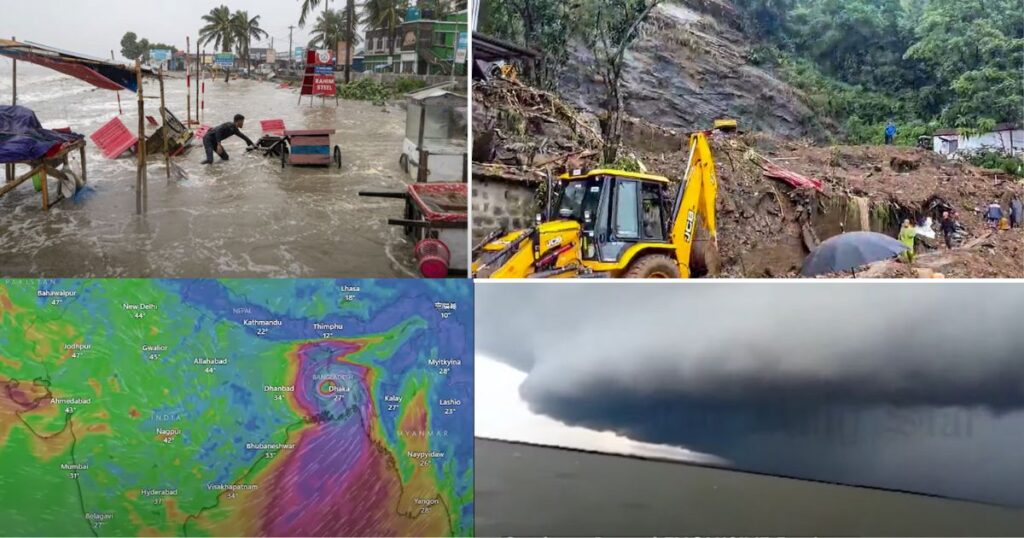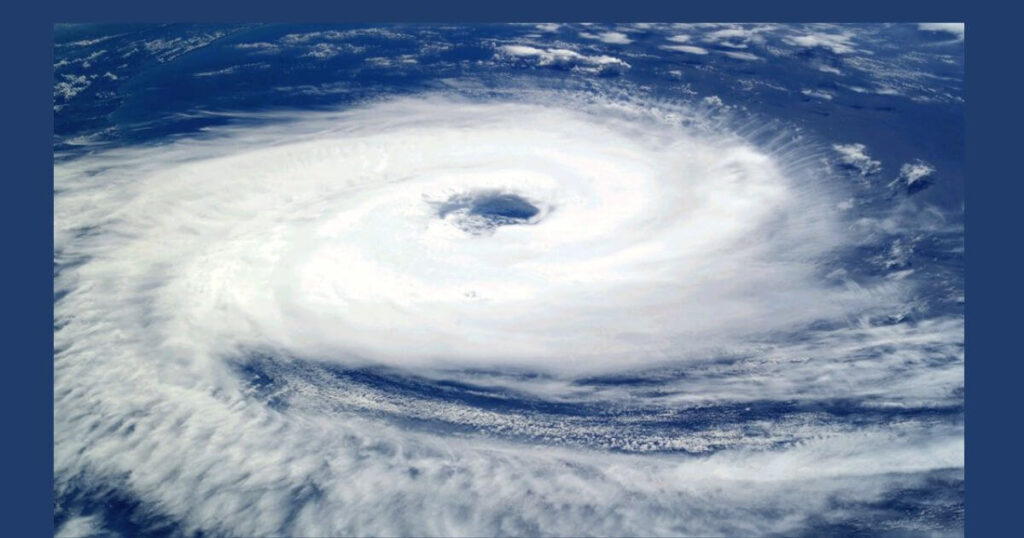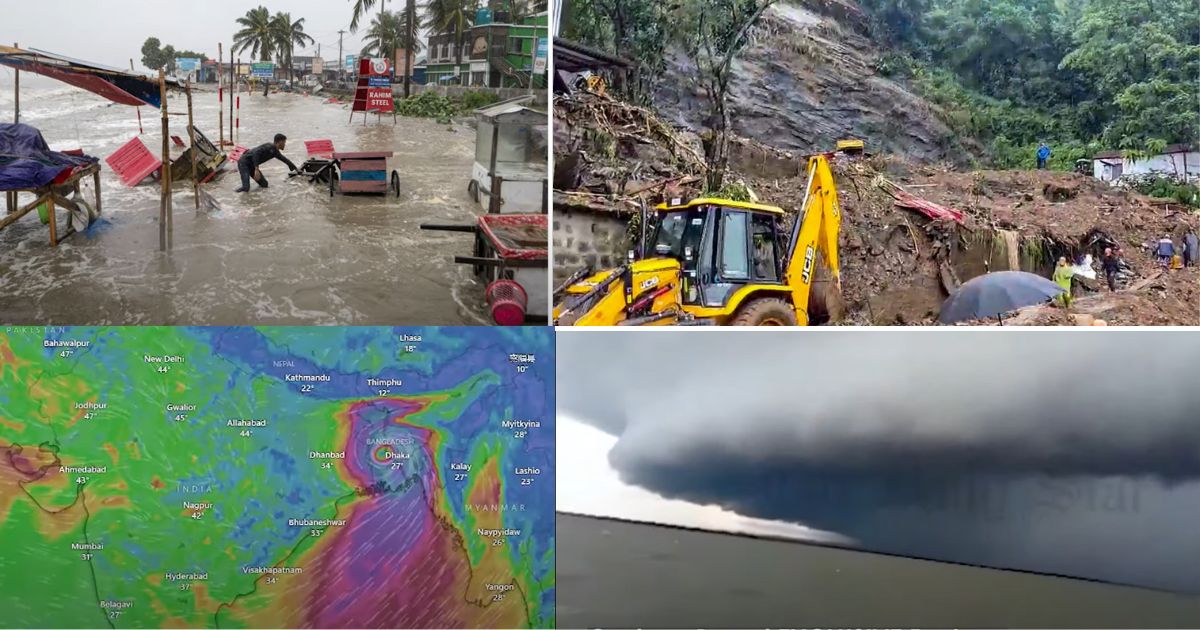
Remal Cyclone Reasons| What is Cyclone and its types| Effects of Cyclone
Discover the reasons behind the Remal cyclone and learn about different types of cyclones in this informative blog post by Minikosh.
Table of Contents
Remal Cyclone, a powerful tropical storm, originated in the Bay of Bengal and is impacting the coastal regions of West Bengal and Bangladesh. Storms and rainfall-induced landslides linked to Remal Cyclone killed many people and numerous injuries, including among schoolchildren, throughout the Northeast on May 28. The heavy rains, accompanied by winds reaching speeds of up to 60 km/h, damaged homes, uprooted trees and caused landslides in multiple locations.
In Mizoram, a stone quarry collapse killed 17 people and left several others missing around 6 a.m. on Tuesday. The incident took place on National Highway 6, which is lifeline of the State, between Melthum and Hlimen on the outskirts of Aizawl, the capital.
In Assam, storms resulted in one fatality each in the Kamrup and Morigaon districts, and 17 others sustained injuries. The Assam State Disaster Management Authority (ASDMA) reported that in Sonitpur district’s Dhekiajuli, a falling tree branch hit a school bus, injuring 12 students who were subsequently taken for medical treatment.

An update from the Assam State Disaster Management Authority (ASDMA) indicated that 14 districts across western, central, and north-central Assam were impacted by storms and accompanying rainfall.
The name ‘Remal’ for the tropical cyclone was provided by Oman. It is set to be the first cyclone to impact the region during the 2024 pre-monsoon season. ‘Remal’ translates to ‘sand‘ in Arabic.
Cyclone Remal, which formed in the Bay of Bengal in May 2024, developed due to a combination of atmospheric and oceanic conditions. The primary factors contributing to its formation include:
Primary factors contributing to Cyclone Remal
Warm Ocean Waters
Sea Surface Temperature: The Bay of Bengal had sea surface temperatures exceeding 26.5°C, which provided the essential heat and moisture necessary for the cyclone’s development. Warm ocean waters are a critical factor in the formation and intensification of tropical cyclones.
Atmospheric conditions
Low-pressure systems, such as the one originating from the Bay of Bengal, provide the ideal environment for cyclone genesis. As warm, moist air converges into the low-pressure area, it rises and cools, condensing into clouds and releasing latent heat, which further fuels the convection process. This continuous influx of warm, moist air helps sustain the cyclone’s circulation and development.
High humidity in the lower to mid-troposphere further supports the convective activity necessary for cyclone formation and intensification. Humidity provides the moisture necessary for cloud formation and fuels the release of latent heat during condensation, which drives the convective processes powering the cyclone.
Coriolis Effect
Earth’s rotation causes the Coriolis effect, which empowered the developing system to acquire the essential rotation needed to form a cyclonic structure. This effect is more prominent at latitudes distant from the equator, thus aiding in the development of cyclones in those regions.
Together, these atmospheric conditions create a favorable environment for the development and sustenance of cyclones like Remal, enabling them to gather strength and potentially pose significant hazards to coastal areas.
Low Wind Shear:
The area encountered minimal vertical wind shear, indicating little fluctuation in wind speed and direction as altitude changed. This condition enabled the storm to establish a cohesive structure without being disrupted by divergent wind patterns at different elevations.
Pre-existing Weather Disturbance:
Remal emerged from an already existing weather disturbance, which supplied the initial cyclonic rotation and convective activity necessary for the formation of a more substantial storm system.
Seasonal Factors:
Pre-monsoon: The pre-monsoon season, typically from April to June, the Bay of Bengal experiences conditions highly favorable for cyclone formation. This period is characterized by optimal sea surface temperatures and atmospheric conditions, leading to heightened cyclonic activity as the interaction between the atmosphere and ocean becomes more dynamic.
Summary of Cyclone Remal Formation:
Cyclone Remal formed as a result of warm ocean waters, a low-pressure system, high humidity, minimal vertical wind shear, the Coriolis effect, and the favorable conditions of the pre-monsoon season coming together.
What is cyclone?
Cyclones, referred to as hurricanes or typhoons depending on the region, are classified according to their formation and features.

Primary types of cyclones with detailed explanations
Tropical cyclones
Tropical cyclones are powerful low-pressure systems originating over warm ocean waters close to the equator. They feature strong winds swirling around a central core, and they usually emerge in tropical or subtropical areas. These cyclones are categorized according to their maximum sustained wind speeds, often utilizing scales like the Saffir-Simpson Hurricane Wind Scale.
Formation: Tropical cyclones emerge over warm ocean waters close to the equator, typically within tropical regions. They come into being when the sea surface temperature reaches at least 26.5°C (79.7°F) and there exists enough atmospheric instability and moisture.
Characteristics:
- Eye: A tranquil, clear central area.
- Eyewall: Circles the eye, characterized by strong winds and intense rainfall.
- Rainbands: Spiral bands of clouds and thunderstorms extending outward from the center.
Classification:
- Tropical Depression: Wind speeds below 39 mph (63 km/h).
- Tropical Storm: Wind speeds ranging from 39-73 mph (63-118 km/h).
- Hurricane/Typhoon/Cyclone: Wind speeds surpassing 74 mph (119 km/h). Terminology varies by region:
- Hurricanes: Atlantic Ocean and northeastern Pacific Ocean.
- Typhoons: Northwest Pacific Ocean.
- Cyclones: South Pacific and Indian Ocean.
Examples:
- Hurricane Katrina (2005)
- Typhoon Haiyan (2013)
- Cyclone Amphan (2020)
- Remal Cyclone (2024)
Extratropical cyclones
Extratropical cyclones, also known as mid-latitude, form outside the tropics in regions with strong temperature gradients. These cyclones derive their energy from the contrast between warm and cold air masses. They often develop along fronts and are associated with widespread precipitation and strong winds.
Formation:
Extratropical cyclones originate beyond the tropics, typically occurring between 30° and 60° latitude. They form along weather fronts where there is a notable temperature contrast between air masses.
Characteristics:
Do not possess a warm core, unlike tropical cyclones. Typically larger in size compared to tropical cyclones. Accompanied by both cold and warm fronts, leading to diverse weather conditions such as heavy rain, snow, and thunderstorms.
Classification:
Often not classified based on wind speed, but rather by the pressure gradient and associated weather patterns.
Examples:
Nor’easters in the United States. European windstorms like Cyclone Xaver (2013).
Polar cyclones
Polar cyclones, found primarily in polar regions such as the Arctic and Antarctic, are characterized by low-pressure systems. They develop due to temperature differentials between polar air masses and their surroundings. These cyclones have the potential to cause extreme weather events such as blizzards and strong winds in polar areas.
Formation:
Polar lows emerge in polar or subpolar regions, usually over open seas during winter. Their formation is driven by the notable temperature contrast between the frigid polar air and the comparatively warmer sea surface.
Characteristics:
Smaller in size when compared to tropical and extratropical cyclones. Characterized by high intensity, featuring strong winds and heavy snowfall. Short-lived, typically lasting for less than 24 hours.
Classification:
Usually categorized based on their formation and impact rather than wind speed.
Examples:
Frequently observed in the Arctic and Antarctic regions during the winter season.
Subtropical cyclones
Subtropical cyclones exhibit features resembling both tropical and extratropical cyclones. They usually originate over subtropical or tropical waters but share some traits with extratropical cyclones, like a wide-reaching wind pattern and a less distinct center. While subtropical cyclones may not display the deep convection common in tropical cyclones, they can still generate notable effects, such as intense rainfall and powerful winds.
Formation:
Subtropical cyclones originate in the region between the tropics and the temperate zones, typically spanning from around 20° to 40° latitude. They exhibit the characteristics of both tropical and extratropical cyclones.
Characteristics:
Possess a wider wind field in comparison to tropical cyclones. May display features of both warm and cold cores. Frequently associated with a combination of weather patterns, including thunderstorms alongside more stable conditions.
Classification:
Subtropical Depression: Resembles tropical depressions but with distinct structural attributes. Subtropical Storm: Characterized by wind speeds lower than those of a tropical storm, yet with some tropical characteristics.
Key Differences:
Location: Tropical cyclones develop near the equator, while extratropical cyclones form in mid-latitudes. Subtropical cyclones arise between the tropics and temperate zones, and polar lows occur in polar regions.
Structure: Tropical cyclones feature a distinct eye and eyewall, whereas extratropical cyclones are larger and linked with weather fronts. Subtropical cyclones exhibit mixed characteristics, and polar lows are smaller yet more intense.
Temperature: Tropical cyclones possess a warm core, extratropical cyclones have a cold core, subtropical cyclones may display both, and polar lows are cold-core systems.
Effects of a Cyclone
The primary impacts of a cyclone typically involve significant rainfall, substantial storm surges, tornadoes, and powerful winds. The extent of property damage or destruction caused by the cyclone largely depends on factors such as its intensity, location, and size. The aftermath of the cyclone is predominantly characterized by widespread devastation and destruction.
Effects of Cyclone on Sea
The cyclone results in a complete halt in sea exports, which takes a significant amount of time to recover from the resulting losses. This interruption in exports puts many individuals at risk of losing their livelihoods. Additionally, the cyclone brings heavy rain and winds, disrupting maritime schedules. The low pressure associated with cyclones leads to a decrease in sea temperatures. Numerous ships are destroyed at ports, with shipwrecks being a common occurrence amidst the damage caused by cyclones.
The impact of a cyclone upon landfall
Potent winds, while often underestimated, possess the potential to inflict significant destruction. They are the primary culprit behind damage to vehicles, buildings, bridges, trees, and more. In the United States, hurricanes represent only 21 percent of all land-based cyclones, yet they contribute to 83 percent of total damages, largely due to their powerful winds. These cyclones have the capability to not only demolish smaller objects but also to wreak havoc on larger structures like bridges and buildings.
Strom Surge
Storm surge, a rise in sea level caused by a cyclone, is considered its most significant effect. The majority of cyclone-related deaths, around 90 percent, are attributed to storm surges. The rapid and sudden increase in sea level leads to flooding in residential areas, resulting in numerous fatalities. The surge can extend several kilometers inland from the coastline. Additionally, the elevated sea levels, combined with strong winds, cause widespread damage to human-made structures.
Heavy Rainfall
Intense rainfall results from thunderstorm activity within a tropical cyclone, serving as the primary catalyst for flooding, landslides, and mudslides. Inland areas are particularly susceptible to flooding triggered by these rains. The downpours are sudden, offering little time for preparation against their effects. The damp conditions and floods create breeding grounds for diseases commonly associated with flooding. Additionally, numerous infections can occur due to cuts and injuries sustained during such events
Also Read:
https://minikosh.com/education-indian-organizations-headquarters/


